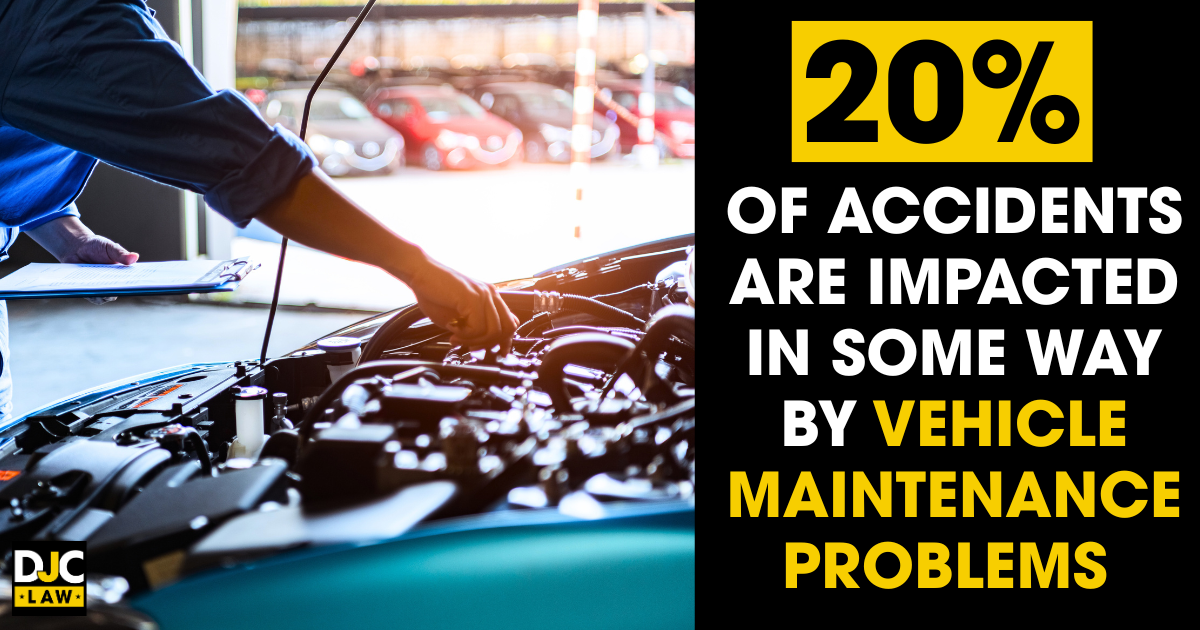What is a Sideswipe Collision? Definition, Causes, and Legal Insights
Sideswipe collisions are where two vehicles make side-to-side contact while traveling in the same direction. Although these crashes rarely make the news headlines, they’re a jarring, traumatic experience all the same.
According to National Highway Traffic Safety Administration (NHTSA) data, sideswipe crashes make up nearly 13% of all crashes. Depending on the speed and circumstances, the consequences of taking a broadside hit can range from a dent to being shunted off the road, or even into oncoming traffic.
In this guide, we’ll discuss what sideswipe crashes are, how they compare to other accidents, and what your legal options are. If you’ve been involved in a collision and need advice, speaking with an experienced car accident lawyer can help clarify your next steps.
Key Takeaways
- Sideswipe accidents occur when two vehicles traveling in the same or opposite directions make side-on-side contact.
- Although sideswipes are among the least deadly accident types, they have the potential to cause devastating physical and psychological injuries, especially when they occur at high speeds.
- The most common causes of sideswipe collisions are driver behavior and negligence, but other contributing factors include road conditions, road design, and vehicle maintenance issues.
- Some of the injuries that arise from sideswipe incidents include lacerations, broken bones, Traumatic Brain Injuries (TBIs), spinal cord injuries, depression, and phobias.
- Determining fault requires gathering evidence and putting it all together. Types of evidence that may come into play include police reports, eyewitness statements, accident scene photos, and vehicle damage patterns.
- The best way to ensure that at-fault drivers are held to account and you receive damages for your losses is to contact an experienced car accident lawyer as soon as possible after the accident.
Defining a Sideswipe Collision
Sideswipe car accidents occur when vehicles make side-to-side contact. Most sideswipe accidents happen when vehicles travel in the same direction, but can also occur between vehicles traveling in opposite directions.
According to ScienceDirect, 200 out of every 1,000 sideswipe accidents lead to driver and/or passenger injuries of varying severity. Thankfully, they’re far from the deadliest crash types, with the IIHS reporting that they make up just 2.7% of all crashes involving fatalities.
In most cases, sideswipe hits are little more than glancing blows, compared to head-on collisions, which are usually full-on, blunt-force collisions.
What Constitutes a Sideswipe Collision?
Collisions count as sideswipes under several circumstances. Two vehicles must be moving past each other in the same or opposite directions. The side of one vehicle must then make contact with the side of the other vehicle. It’s an accident that tends to happen during lane changes or when traffic merges.
The danger usually isn’t in the initial contact but in what happens afterward. Minor sideswipes might leave behind nothing but bruised egos, but if one or both drivers lose control, it can lead to serious accidents, including multi-car pile-ups.
Comparison With Other Types of Vehicle Accidents
Sideswipes are a distinct type of accident. However, remember that they’re just one type of accident that drivers could encounter. According to an Esurance report, there is a one in 366 chance of an accident for every 1,000 miles driven.
Here’s a list of the most common crash types so that you can compare:
- Rear-End Collisions – One vehicle strikes the back of another.
- Head-On Collisions – Two vehicles traveling in opposite directions run into each other.
- T-Bone Crashes – T-bone accidents happen when the front of one vehicle crashes into the side of another. These are the most similar to sideswipes, with the contact area of the victim’s vehicle being the same in both crash scenarios.
- Single-Vehicle Accidents – These accidents involve a vehicle hitting a stationary object or overturning.
When you compare sideswipes and broadsides to these accidents, they might not seem that serious, but they regularly tear apart the lives of Americans nationwide. With chain reactions, rollovers, and secondary crashes to worry about, sideswipe accidents shouldn’t be taken lightly.
Common Causes Behind Sideswipe Collisions
Sideswipe accidents can arise from any number of factors, including driver error, vehicle issues, bad weather, or even poorly designed roads. With Consumer Shield reporting up to six million crashes annually on average, your chances of being sideswiped are higher than you think.
Let’s investigate the most common causes of these accident types to understand why sideswipes are so common.
Driver Behavior: Negligence and Distraction
Driver negligence is the most common cause of not only sideswipes but also all collisions. In terms of sideswipes, drivers forgetting to check their blind spots and distracted driving are the leading causes. Regarding the latter, the U.S. Centers for Disease Control (CDC) reports that distractions contribute to one in six of all accidents.
Other reasons include:
- Impaired driving
- Drowsy driving
- Aggressive driving
- Not using turn signals
- Failing to yield
You’re likely noticing a trend here. Like all accidents, better driving is the main way to reduce the number of sideswipes. That’s why road safety experts recommend drivers get themselves trained in defensive driving strategies.
Environmental Factors Influencing Sideswipe Accidents
Road conditions are another significant contributor to sideswipe accidents. According to the Federal Highway Administration (FHWA), 21% of all vehicle crashes are weather-related. Likewise, issues like construction zones and heavy congestion can also contribute to an enhanced risk of a side-on-side car crash.
Factors that could make these crashes likelier include:
- Bad weather
- Low light
- Night driving
- High winds
- Construction zones
- Heavy congestion
What all these causes have in common is that they reduce visibility, maneuverability, and traction. Even cautious drivers can be thrown off by any of these non-conventional driving conditions.
Vehicle Condition and Maintenance Issues

Problems with your vehicle caused by poor maintenance can also cause you to sideswipe another driver. According to the NHTSA, as many as 20% of accidents are impacted in some way by vehicle maintenance problems.
For example, worn tires can reduce how much traction you have, whereas faulty brakes make it more challenging to control your speed while changing lanes. If your mirrors are broken, you can’t check your blind spots, whereas a malfunctioning signal or headlight could cause confusion among other drivers.
Note that if your vehicle has any of these problems, you could be pulled over and issued a citation or a fix-it ticket. In every state, it’s your legal responsibility to maintain a safe, roadworthy vehicle.
Road Design: The Impact of Infrastructure on Safety
Drivers blaming the roads may result in people rolling their eyes, but there’s evidence to show that the layout and condition of America’s highways could be causing more accidents. It goes back to how roads contribute to or work against safe lane management.
For example, narrow lanes, such as those on rural roads or in construction zones, reduce room for error when merging or switching lanes. Plus, if there are faded or no road markings, drivers are left to eyeball the situation and make a judgment call.
Even the original design of roads can increase sideswipes. For example, poorly designed on-ramps, merge areas, and abrupt lane terminations can lead to drivers being forced to make sudden, and even unsafe, lane changes.
Injuries Associated With Sideswipe Accidents
Every type of crash has common injury patterns, and sideswipes are no different. Sideswipe accidents are capable of causing serious injuries, especially when they occur at higher speeds or when the vehicles involved are forced into other objects or off the road completely.
Another point to remember is that sideswipes can result in both physical and psychological injuries. Depending on the circumstances, these severe injuries could become chronic, resulting in a lifetime of medical issues.
Physical Injuries: Common Types Sustained in Sideswipe Collisions
Physical injuries can arise from first contact in a broadside accident or secondary impacts. The most common injuries tend to resemble those found in most types of accidents, including whiplash, neck injuries, back sprains, and spinal injuries.
Other significant injuries include, but are not limited to:
- Broken bones
- Lacerations
- Shoulder and arm injuries
- Chest injuries
- Traumatic Brain Injuries (TBIs)
These physical injuries may occur at low speeds. Thankfully, most low-speed sideswipes result in little more than minor injuries that most people will recover from with medical attention and rehab.
Psychological Effects: Navigating Trauma After an Accident
Psychological effects may also arise due to the trauma of the experience, especially when more serious physical injuries come into play. According to one ScienceDirect study, mental disorder rates after car accidents can be as high as 40-50%.
Accident victims often experience Post-Traumatic Stress Disorder (PTSD), which may manifest as flashbacks, nightmares, or even the development of a lasting driving phobia. Fear of getting behind the wheel again can also result in other issues, like mood swings, depression, and irritability.
These types of injuries can last for years after all of your physical injuries have long since healed.
The Long-Term Consequences of Sideswipe Injuries
Sideswipe accidents may cause long-term impacts that spread through your life like a pane of glass shattering. Unfortunately, the long-term issues may manifest physically as chronic pain and mobility issues or as long-term mental health issues.
Other long-term issues might include:
- Reduced mobility
- Permanent disability
- Inability to drive again
- Financial strain
- Curtailed career
- Emotional impact
- Damaged personal relationships
Sideswipe accidents are often downplayed, but more serious incidents could easily lead to permanent complications. That’s why it’s essential to seek medical attention immediately and stay in close contact with your medical care provider.
Determining Liability in Sideswipe Collisions
Deciding who’s responsible for a sideswipe collision is crucial for making a claim for financial compensation in the aftermath. The problem is that liability is never clear-cut, meaning neither driver is always responsible for an accident.
It all depends on the situation, traffic laws, and any other mitigating factors that might come into play. It’s why hiring an experienced personal injury lawyer is critical for building your case and proving fault.
Understanding Comparative Negligence
Comparative negligence is the concept of shared fault. Like many states, Texas uses the modified comparative negligence model, meaning that blame can be shared between both parties. How much blame you assume determines whether you’re able to claim compensation.
The Lone Star State uses the 51% bar rule to decide. It stipulates that you cannot claim financial compensation if you’re 51% or more responsible for an accident. Anything under 51% and you’ll still receive compensation, but it will be reduced by the appropriate percentage.
For example, if you’ve received $50,000 for a sideswipe accident you were 20% at fault for, you’d only receive $40,000 as part of your final settlement.
Evidence Used to Establish Fault
Fault is determined by the evidence available. An experienced car accident attorney can gather evidence on your behalf, but what you do at the scene will also determine what evidence is available.
Some of the most common types of evidence used to assign blame in sideswipe accidents include:
- Police crash reports
- Eyewitness statements
- Accident scene photos
- Dashcam footage
- Security camera footage
- Vehicle damage analysis
- Roadway evidence
- Accident reconstruction
Like in any personal injury claim, there’s no such thing as too much evidence. The more evidence you can get to build your case, the greater your chance of claiming maximum compensation for your losses.
Scenarios of Shared Fault: What Happens Then?
Many sideswipe cases in Texas will result in both drivers assuming some blame for the accident.
For example, a driver might have shifted slightly out of their lane without signaling, while another driver was speeding or texting while driving. Another example could include two drivers trying to merge into the same lane simultaneously from different sides.
How much blame each driver assumes is often one of the key points of contention when making a claim. That’s why a personal injury attorney is so vital, because a slight shift in the blame from 20% to 25% could result in you receiving thousands of dollars more or less.
And that can have life-altering implications.
Steps to Take After a Sideswipe Collision
What you do after a sideswipe collision matters. Ensure your own safety and then pull over and call 911. Ask for an ambulance (if necessary), request a traffic officer to attend, and exchange contact and insurance details with the other driver. The accident scene is also the prime location for gathering evidence to use as part of your future claim.
Follow these steps in detail to ensure you do all the right things after a broadside collision.
Ensuring Safety at the Accident Scene
The first step is ensuring your safety and that of your passengers. Pull over where it’s safe if your vehicle is still operable and get out of the car. Get to safety just in case there are any secondary impacts involving your vehicle.
Check yourself and passengers for injuries. If anyone is seriously hurt, request an ambulance to attend the scene. You should also call and ask for a police officer to attend the scene and fill out an official crash report.
If the other driver involved is aggressive or displaying signs of road rage, lock yourself in your vehicle safely and tell the 911 operator that your personal safety is under threat. And if the other driver tries to leave, don’t try to stop them. Take down their license plate number and inform the officer when they arrive.
Collecting and Documenting Essential Information
The best time to collect evidence is when the accident scene is fresh. Use your cell phone to take photos of the scene. Some areas to focus on include:
- Visible injuries
- Vehicular damage
- Road markings
- Road conditions
- Signage
You should also ask any eyewitnesses present if they’d be willing to provide their contact details and give a statement later. They aren’t obligated to say yes, so the ball is very much in their court.
Finally, exchange your contact and insurance details with the other driver. That’s something you’re required to do by law, and refusing to do so is a criminal offense that could land you in jail.
Engaging With Law Enforcement and Emergency Services
Assuming you don’t need emergency medical attention at the roadside, you’ll be dealing with a traffic officer who arrives on the scene. Always remain polite and answer any questions put to you about the accident.
It’s not the officer’s job to judge who was to blame, only to give an opinion. If there’s firm evidence that someone has broken a traffic law, they’ll also issue citations to one or both parties. That’s something that will also go down on the final accident report. It carries significant weight when it comes to apportioning blame.
Stick to the facts and avoid too much idle chatter, as anything you say can and will be used against you when the time comes to make an insurance claim. Even a polite apology could be construed as admitting blame, so limit your communications to the essentials.
Legal Routes and Compensation After a Sideswipe Collision
Were you injured in a sideswipe collision? It’s your legal right to lodge a claim for compensation for your losses.
The first step is filing a claim against the at-fault driver’s insurer for compensation. If your claim is denied, the driver is uninsured, or the driver’s insurance coverage doesn’t cover your damages, you can also file a personal injury lawsuit against them.
Remember, under Texas law, the statute of limitations is two years from the date of your accident. If you fail to file your lawsuit in time, you lose the right to claim compensation, so act quickly. Nobody should be left to pay for someone else’s mistakes, so hire a personal injury lawyer to ensure your legal right to compensation is asserted.
Types of Compensation: What Can You Recover?
Settlements are made up of multiple types of compensation. These are split into economic damages, like medical expenses and property damage, and non-economic damages, such as pain and suffering.
So, what potential damages are available from a sideswipe accident?
- Medical Costs – Hospital bills, physiotherapy, counselling, medication, surgeries, ambulances, and future medical bills.
- Lost Wages – All wages from every shift missed due to your injuries can be claimed back. If you’re unable to return to work, you can claim for lost earning potential.
- Property Damage – The cost of repairing or replacing your vehicle, alongside any personal belongings damaged or destroyed in the accident.
- Pain and Suffering – Pain and suffering damages cover emotional distress, chronic pain, and loss of quality of life.
- Loss of Consortium – If your injuries have impacted your relationship with a spouse or family member, you can claim for the lasting adverse impacts.
Sometimes, you may also receive punitive damages if you were the victim of reckless driving from the adjacent lane. These damages are relatively rare and are only imposed when the at-fault party’s conduct was intentional, reckless, or utterly egregious, such that an extra punishment is necessary.
The Role of Insurance Companies in Sideswipe Claims
Auto insurance companies are an integral part of every sideswipe claim. As an at-fault state, you’ll file a claim for damages through the other driver’s insurer. If the other driver doesn’t have insurance and you have additional coverage like uninsured/underinsured motorist coverage, you’ll file a claim with your own insurer.
What many drivers don’t consider is that insurance companies are businesses. Insurers want to protect their bottom lines, meaning they’ll do everything they can to devalue or outright deny your claim.
Some of the most common strategies they might employ include:
- Making lowball settlements.
- Blaming you for the accident.
- Delaying claims to get you to settle for less.
- Disputing your medical costs.
- Arguing that you had pre-existing medical conditions.
That’s why we always recommend avoiding auto insurance adjusters entirely and hiring a lawyer instead. Let them handle communications and thwart the bad-faith tactics they might employ. A legal professional equips you with the knowledge to know when to accept a settlement and file a formal lawsuit.
When to Consult a Personal Injury Lawyer
Calling a personal injury lawyer should be one of your first priorities after an accident because these are the people who will manage your claim and increase your chances of making a successful claim.
Generally, we recommend consulting lawyers if any of the following apply:
- You were injured in your sideswipe accident.
- Fault is being disputed.
- The auto insurer has issued a lowball offer.
- You’re experiencing significant expenses.
- You don’t know your legal rights.
- Multiple parties are involved.
Personal injury lawyers nearly always work on a contingency fee basis, meaning you don’t pay anything if you don’t get a settlement. They take a percentage of the settlement, meaning lawyering up is genuinely a no-risk play.
Preventative Measures to Avoid Sideswipe Accidents
Nobody wants to be involved in an accident. With due care and attention, everyone can cut their risk. Of course, you can’t control what others do, which is where defensive driving strategies come into play.
Defensive driving is the art of being proactive and recognizing potential hazards rather than simply reacting to them. Pair this with a focused driver paying attention at all times, and your chances of being sideswiped collapse.
Safe Driving Practices to Reduce Risks
Reducing your risk of getting sideswiped starts with addressing the most common causes of these accidents.
Here are some safe driving practices for dealing with the potential for sideswipes:
- Always check your blind spots before changing lanes.
- Use your turn signals early.
- Maintain a safe following distance.
- Don’t switch lanes unless you absolutely have to, especially in heavy traffic.
- Stay in the center of your lane unless you’re about to switch.
- Give larger vehicles, such as trucks and buses, extra space.
The Importance of Awareness and Defensive Driving
Defensive driving and staying aware are the golden rules for not only avoiding sideswipe accidents but also steering clear of all types of accidents. The whole point of defensive driving is recognizing threats and anticipating the mistakes other drivers might make.
You can start defensive driving from your very next trip by constantly scanning the road, watching what other vehicles are doing, and being calm and patient. Be prepared to change your speed or position at a moment’s notice if you recognize potentially erratic behavior.
We also recommend taking a formal defensive driving course to sharpen your skills.
Frequently Asked Questions About Sideswipe Collisions
Are sideswipe collisions common?
Sideswipes are reasonably common, with NHTSA data reporting that they can make up anywhere from 10-15% of all accidents, depending on the year. However, data also reveals that they make up a minuscule number of fatal crashes, measuring well under 5% year after year.
What if both drivers blame each other?
When both drivers blame each other, hiring legal representation is crucial. Legal professionals will review the evidence and put it all together to determine who was at fault and to what extent.
How do you handle claims when no witnesses are present?
Eyewitnesses represent just one channel for proving who was at fault for a sideswipe collision. Without witnesses, insurers and lawyers will turn to police reports, dashcam footage, and vehicle damage patterns. It may also be necessary to consult an accident reconstructionist to find out what happened.





